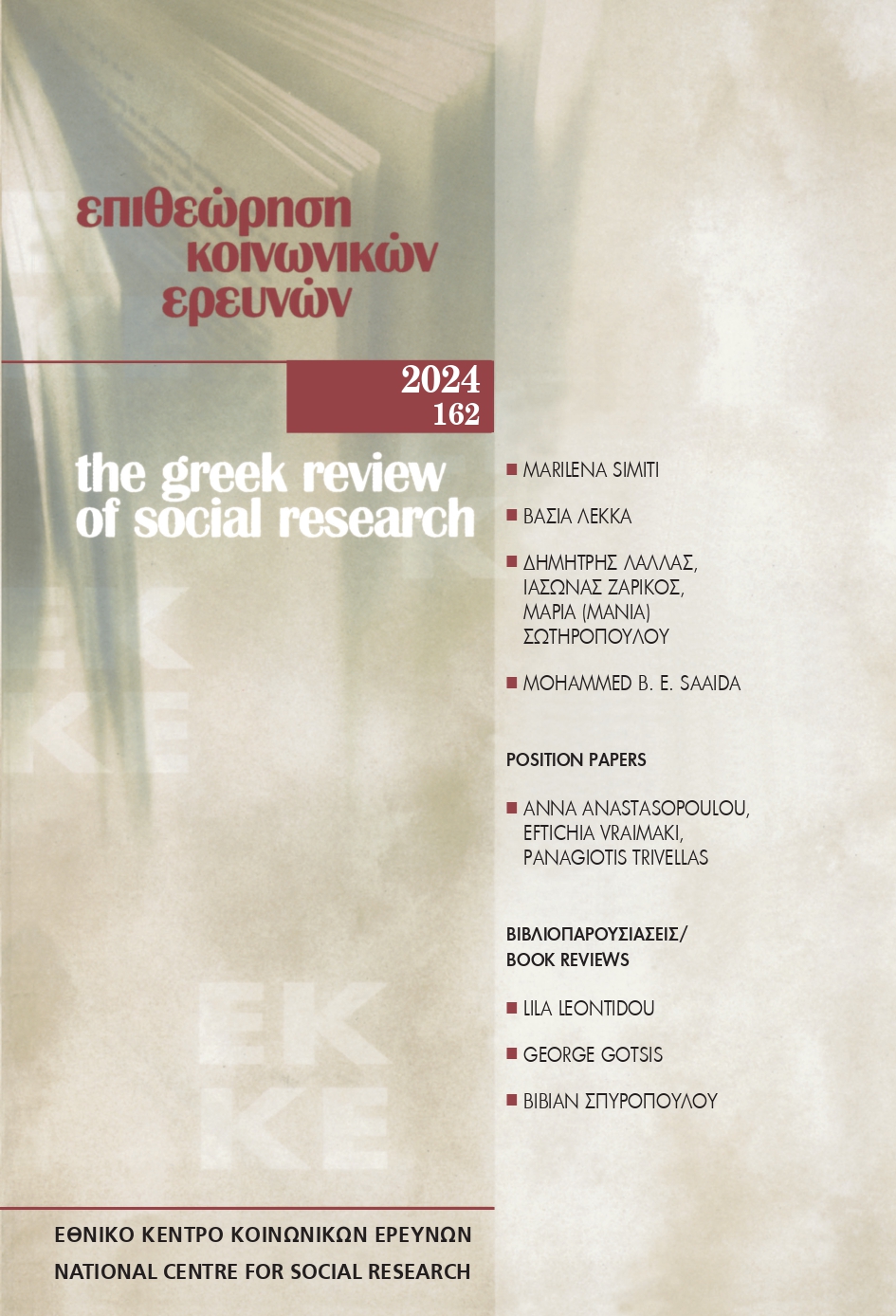Children with Attention-Deficit/Hyperactivity Disorder: Normalising childhood in contemporary biopolitical societies

Abstract
This article examines the persistent and continuously increasing diagnosis of ADHD in children within Western societies and the attempt to normalise childhood. Having as a point of departure the Foucauldian theory and the tools of the new sociology of childhood, our target is to delineate the consequences of this diagnosis regarding the notion of the “child” per se and what is constituted as “normal” and “pathological” childhood and, consequently, regarding the construction of children’s new identities and new subjectivities within biopolitical societies at the beginning of the 21st century.
Article Details
- How to Cite
-
Lekka, V. (2024). Children with Attention-Deficit/Hyperactivity Disorder: Normalising childhood in contemporary biopolitical societies. The Greek Review of Social Research, 162, 29–56. https://doi.org/10.12681/grsr.36708
- Issue
- 2024: 162
- Section
- Articles

This work is licensed under a Creative Commons Attribution-NonCommercial 4.0 International License.
Authors who publish with this journal agree to the following terms:
- Authors retain copyright and grant the journal right of first publication with the work simultaneously licensed under a Creative Commons Attribution Non-Commercial License that allows others to share the work with an acknowledgement of the work's authorship and initial publication in this journal.
- Authors are able to enter into separate, additional contractual arrangements for the non-exclusive distribution of the journal's published version of the work (e.g. post it to an institutional repository or publish it in a book), with an acknowledgement of its initial publication in this journal.
- Authors are permitted and encouraged to post their work online (preferably in institutional repositories or on their website) prior to and during the submission process, as it can lead to productive exchanges, as well as earlier and greater citation of published work (See The Effect of Open Access).


